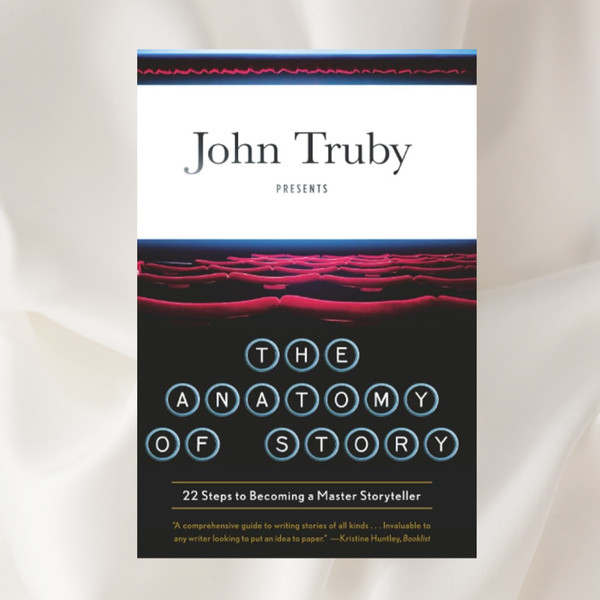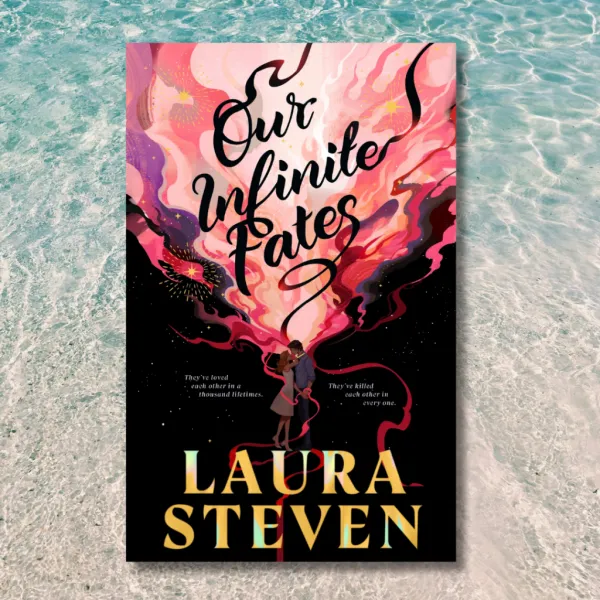20 Book Tropes Every Creative Writer Should Know
From chosen ones to forbidden love, discover 20 powerful book tropes every writer should know.

Ever notice certain story patterns popping up everywhere? Those are what we call tropes - recurring themes, motifs or story devices that resonate with readers. When I first started learning how to write a novel, I wasn't sure what tropes were, but once given examples i realised there are tropes in every book we read. Tropes can feel familiar (and sometimes cliché), but they’re also storytelling shortcuts that connect with readers quickly. Think of them as reader-friendly building blocks - or, if you’re feeling adventurous, fun clichés to twist into something fresh. Below, we dive into 20 must-know book tropes for writers of different genres, with examples, tips, and key takeaways.
1. The Chosen One 👑
This trope is a common one, but still very beloved. Every writer’s secret weapon: a hero who’s destined to save the day. This trope singles out an ordinary character for an extraordinary fate. Frodo Baggins is my favourite example – an unassuming hobbit who turns out to be “the chosen one,” prophesied to destroy the One Ring. It taps into themes of destiny, personal growth, and responsibility.
Key takeaway: Chosen-One stories ride high on destiny and transformation. If you use it, make sure the hero earns that destiny (and maybe add a few doubts along the way).
2. Enemies to Lovers 🗡️
This trope is more common in the romance genre, but it also makes for a great sub-plot story trope. Hate plus attraction equals literary gold. In this trope, two characters who can’t stand each other gradually fall in love. Think of Antony Bridgerton and Kate Sharma in Bridgerton. At first they provide plenty of snarky banter until they team up for a mutual goal and tension inevitably turn into sparks. This dynamic is a personal favourite for a reason, and keeps readers hooked with conflict and chemistry.
Key takeaway: Enemies to lovers offers plenty of built-in tension and playful banter. Use it to ratchet up conflict before the big romantic payoff.
3. The Mentor 🏫
Every hero needs a guide to survive in their cruel worlds. The Mentor is an experienced character who teaches or advises the protagonist. A classic example is Obi-Wan Kenobi teaching Luke Skywalker, or even Yoda coaching the Jedi in Star Wars. Mentors guide the heroes through challenges and boost the hero’s skills or wisdom (and sometimes join the action when needed).
Key takeaway: A good mentor gives wisdom and training, sometimes dripping with wit. They can also earn readers’ affection, so make them memorable - even if they don’t survive the journey!
4. Love Triangle ❤️
Another romance trope and sub-plot idea. The Love Triangle ropes three characters into a romantic battle. Which two will end up together? Who do you ship? This trope stacks up tension, forcing characters to confront their true feelings. First example to come to mind would probably be Twilight. The most debated love triangle of Bella, Edward, and Jacob drove its plot and had great success with readers gunning for a particular man to win (Team Edward or Team Jacob?). Triangles when done correctly do keep readers guessing.
Key takeaway: Use a love triangle for high-stakes emotional conflict. Balance it carefully (and be prepared for passionate reader opinions!).
5. Friends to Lovers 💘
A slow-burn favorite: two friends realise there’s more sparking between them than friendship. This trope plays on the fear of ruining a good friendship and the comfort of knowing someone well. For example, The Hating Game shows frenemies who eventually admit their feelings. The emotional payoff is huge because the bond is deep, and that bond could be at stake.
Key takeaway: Friends-to-lovers feels cosy and believable. Ramp up the internal conflict: will they risk the friendship for love?
6. Fake Relationship (Fake Dating) 🧑🏻❤️👩🏼
Pretend love, real feelings. In this trope, characters pretend to be a couple (often to fool nosy relatives or win a contest), but of course genuine feelings sneak in. It’s used for romantic comedy tension and humour. Daphne Bridgerton and Simon Basset are a great example of love sprouting from a plan of convenience.
Key takeaway: The fake-relationship trope combines humour and slow-burn romance. Keep the reason for faking it creative, then let that pretence crack open to reveal the real emotion.
7. Coming of Age 👶🏻
The protagonist grows up before our eyes. This trope follows a character (often a teen) moving from youth to adulthood, learning life lessons along the way. It’s about self-discovery, identity, and the awkward (or exhilarating) ride into maturity. Classics like To Kill a Mockingbird or Harry Potter use this to show inner growth.
Key takeaway: A coming-of-age story hinges on emotional growth. Show the character changing – readers should feel that transition.
8. Rags to Riches 💵
The ultimate underdog story: a poor or ordinary person rises to wealth, success, or power. Cinderella and Aladdin nailed this trope. It’s satisfying to watch a character overcome adversity and literally transform their life.
Key takeaway: Rags-to-riches is inspiring and aspirational. Use it to show resilience (and maybe throw in a caution: wealth can complicate things, too).
9. Forbidden Love 💗
Lovers face insurmountable obstacles - society, family, or even species (“Monster falls for human,” anyone?). Romeo & Juliet made this trope famous. Forbidden love raises the stakes since the world really doesn’t want them together. The tension is high because the lovers must fight external odds.
Key takeaway: Forbidden love cranks up emotional stakes. Use cultural taboos, class divides, or opposing allegiances to make readers root for the couple against the world.
10. Redemption Arc 🦹🏻♂️
Everyone loves a comeback story. In a redemption arc, a character (often a villain or flawed antihero) seeks to atone for past mistakes. Think Darth Vader or Severus Snape learning to do the right thing in the end. This trope explores guilt, sacrifice, and personal growth.
Key takeaway: A redemption arc packs an emotional punch. To make it work, show genuine remorse and a believable path to atonement (no flip-flopping!).
11. Prophecy or Destiny 🔮
Something foretells the hero’s fate. A prophecy trope revolves around a prediction or destiny that looms over the story. It creates a sense of “inevitability” where readers read on to see how it unfolds. This trope can drive a character to fulfill or fight their destiny. like Harry Potter’s prophecy, for example.
Key takeaway: Prophecies add weighty stakes (“It was foretold!”). Use them to motivate characters (or have them rebel against fate). Make sure the prophecy has a clear payoff by the end to avoid confusion.
12. Femme Fatale 👠
A mysterious seductress who ensnares others. Classic noir and thrillers love this trope. The femme fatale is dangerous and alluring, often leading heroes (usually male) into trouble. She’s not always a villain, but she’s certainly complicated. Think of Cersei Lannister in Game of Thrones.
Key takeaway: A femme fatale adds intrigue and tension. She can drive the plot (and the hero!) off course. Just beware of stereotypes - give her depth beyond just “seductive eye-roll.”
13. The Quest (Hero’s Journey) 🌲
An adventurous road trip for the soul. The hero’s journey is basically a big quest. A character sets out on a mission (find the holy grail, defeat the evil overlord, rescue the kidnapped sibling, etc.), facing trials along the way. The Hobbit’s adventure to the Lonely Mountain and Frodo’s journey in LOTR both fit this trope. Key takeaway: Quests provide a clear goal and structure. Use the quest to force characters to grow (each trial should change them a bit). Even if the quest is epic (or even mundane), make the stakes clear.
14. Magical MacGuffin (Powerful Artifact) 🪙
Any object that drives the plot. This trope features a powerful object everyone wants - a ring, a sword, a spellbook - which usually must be found or destroyed. The One Ring in LOTR, for instance, is a classic magical MacGuffin. These items often have mysterious powers or curses.
Key takeaway: A Magical MacGuffin creates immediate purpose. It can represent temptation, power, or danger. Define its rules clearly so readers know why it’s worth fighting for.
15. Damsel in Distress (and Its Flip) 👗
The old trope: a heroine needs rescuing by the hero. Fairy tales, early Hollywood, and many medieval fantasies use this. But modern writers often flip it. For example, Katniss Everdeen starts out not needing rescuing at all – she’s rescuing others. Subverting the damsel trope makes her a skilled survivor, allowing her to save herself keeps the trope fresh.
Key takeaway: Damsel in Distress is very old-school; use it carefully! Either give her agency (save herself) or knowingly play with reader expectations.
16. Unreliable Narrator ✍🏻
Don’t trust what you read! In this trope, the story’s narrator is lying or hiding things from the reader. Maybe they have memory issues, or their own agenda, or mental illness. The twist: when readers find out the truth, it redefines everything. Gillian Flynn’s Gone Girl is famous for this.
Key takeaway: An unreliable narrator builds suspense and surprise. If you use it, drop subtle clues so the reveal feels earned.
17. Red Herring 🐟
This trope is found especially in mysteries: something that seems important but misleads the reader. A false clue or suspicious character diverts attention from the real answer. Think detective stories: that creepy gardener who looks guilty… but turns out to have a harmless reason for lurking.
Key takeaway: A red herring keeps readers guessing. Use it to create suspense - but be careful to eventually resolve it, or readers will feel cheated.
18. The Reluctant Hero 🦸🏻
This trope features a protagonist who doesn’t want to be the hero or go on the adventure, but is forced into it anyway. Maybe they’re shy, traumatized, or just plain lazy. The interesting part is watching them overcome resistance. Han Solo is a great example of this.
Key takeaway: A reluctant hero feels relatable. To use this trope, show convincingly why they’d rather not (family obligations? fear?) and then make that turnaround satisfying.
19. Twist Ending 🌀
Everybody loves a good didn’t see that coming. This isn’t a plot or character trope exactly, but a storytelling device: the ending flips everything on its head. Mystery and thriller writers use it as a hook. Think of classic Sixth Sense.
Key takeaway: A well-executed twist ending leaves a lasting impression. Plan carefully: it should be surprising and fair (hints along the way). Avoid cheap shocks - readers should be able to look back and say, “Oh, of course!”.
20. Ticking Clock (Race Against Time) ⏱️
When the world (or at least the characters) are running out of time, suspense goes through the roof. Whether it’s a bomb about to go off, a magical curse expiring at midnight, or an alien invasion coming in 24 hours, setting a deadline raises the stakes in the plot. Thrillers use this all the time. Think of the classic movie The Ring where the characters have 7 days before they die.
Key takeaway: The ticking clock trope amps urgency. Make the deadline clear and unavoidable. The closer you cut it, the more nail-biting tension (but remember to actually show why it matters!).
Key Takeaways: Tropes offer familiarity that readers love, but you can always subvert or freshen them up to surprise your audience. As creative writers, know the expected tropes in your genre (read widely!), then decide: will you lean in and deliver, or flip the script? Either way, use them intentionally. A clever twist on a classic trope can turn a casual reader into a fan.
Want to use a trope but don't have a story idea? Check out this post, 5 Pinterest Images That'll Make You Want To Write a Story.
Have a story idea but need help defining the core premise? Check out this post, How to Write a Novel Premise.
✍️ Hop to it and keep writing! 🐸 - Krystal




